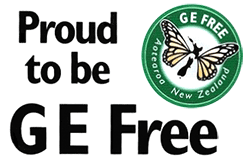The GE animal facility at Ruakura could be further compromised with the announcement that AgResearch is downsizing its executive positions [1].
�There are serious concerns about the GE facility management at Ruakura," says Claire Bleakely from GE Free NZ in food and environment. "The last time there was a merger of two Government research organisations, a serious breach of protocols threatened biosecurity and resulted in the termination of the GE field trial."[2]
Prior to the latest AgResearch announcement GE-Free NZ approached Ministry of Agriculture and Forestry (MAF) and the Environmental Risk Management Authority (ERMA) with concerns over possible escape of GE micro organisms from the AgResearch facility. This included evidence of years of sub-standard environmental research meant to test the effect of horizontal gene transfer (HGT) in soil.
However ERMA will not consider these issues for re-assessment until a payment of a fee to process the application is made.
�Regulatory officials seem unwilling to act on bio-security concerns we have raised,� said Mrs. Bleakley "The public are being charged a fee for notifying a breakdown in GE-safety controls. This is a breakdown in regulation of the facility, with the possibility of escape of viable GE material from the flooded Ruakura site posing a significant potential risk to dairy farmers in the Waikato region."
The scientific information provided to ERMA in March 2011 asked for re-assessment based on new data in an independent review [3] of AgResearch's HGT testing [4]. The review by Heinemann and colleagues at the Centre for Integrated Research in Biosafety Institute (INBI), was published in the Journal of Organic Systems.
In 2002, AgResearch was charged to gather comprehensive HGT data from transgenic animals under field trial conditions, intended to be cutting edge New Zealand research that would inform the international scientific community.
The review by INBI has raised serious questions as to the adequacy of the HGT micro-organism testing regime and doubts whether it was robust enough to meet even the most basic standards expected by the regulator [5]. The experimental design was further compromised by the actual depth at which the samples were taken [6]. In effect the testing was done on soil that had never been near the pits or carcasses.
The failure by ERMA to scrutinise data is compounded by ambiguity in the safety controls around the containment of GE animals. The points raised are of national importance. Every day that ERMA delays action there is the possibility that New Zealand 's biosecurity and economy is at risk.
In summary, the country's major GE animal research centre has failed to conduct adequate soil testing, has water contaminated with blood run-off escaping from the facility into local waterways, and is now about to 'let go' the person who has been in charge of horrific animal experiments. And no one is doing anything about it.
GE-Free NZ will be considering options for further action on this seriously concerning situation.
References:
[1] Executive position cut at AgResearch http://www.radionz.co.nz/news/rural/75049/executive-positions-cut-at-agresearch
[2] GE Breaches, GE Brassica Breaches http://www.gefree.org.nz/ge-breaches/
[3] Heinemann J., Kurenbach B. and Bleyendaal N, 2011, Evaluation of horizontal gene transfer monitoring experiments conducted in New Zealand between 2004 and 2009, Journal of Organic Systems; Vol 6; 1; 2011 http://www.organic-systems.org/journal/Vol_6(1)/index.html
[4] Microbial characterisation of soils from offal pits, 2004 -2009� http://www.gefree.org.nz/assets/Microbial-characterisation-of-soils-from-offal-pits.pdf
[5] �It is our opinion that AgResearch has raised considerable doubt over whether experiments it conducted were intended to, and therefore could, deliver either risk mitigation or inform the Authority about the potential for adverse effects arising through HGT�� (Heinemann et al, 2011, p. 12)
[6] We [the reviewers] can only conclude that the soils examined by AgResearch were irrelevant to the task of monitoring HGT because they were not in contact with the carcasses, and were so far away on the scale of microorganisms as to have been equivalent to sampling in an arbitrary and distant location. (Heinemann et al, 2011p.14)
The small scale of the survey, the distance from the transgene source from which the samples were taken, and the uncritical approach to the negative results make the conclusion drawn unsupportable from the data (Heinemann et al, 2011p.16)
ENDS:
Claire Bleakley 3089842 / 027 348 6731
Jon Carapiet 0210507681
|


